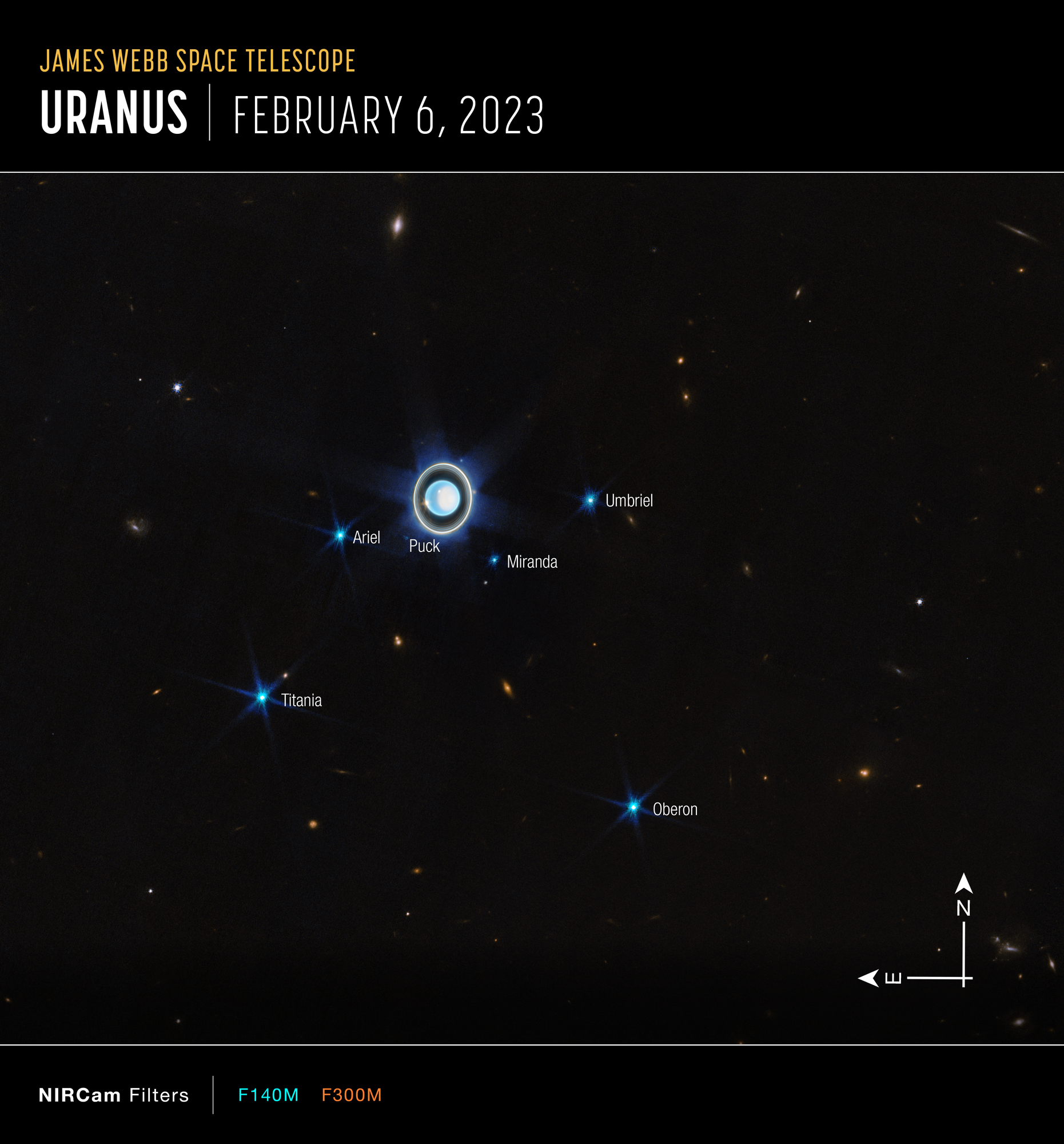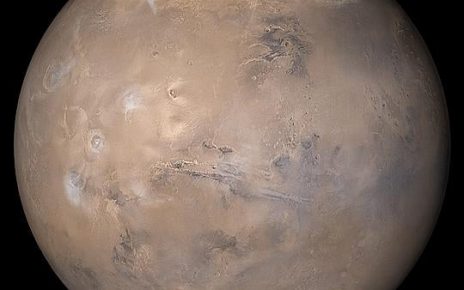The James Webb Space Telescope (JWST) has captured an amazing image of Uranus, showing in great detail the ice giant’s ring system, its brightest moons and its dynamic atmosphere.
The new observation, made on Feb. 6, follows a similarly stunning photo JWST captured recently of the solar system’s other ice giant, Neptune.
The new Uranus image shows 11 of the planet’s 13 known rings, some of which are so bright that they blend together somewhat. What will really astound astronomers, however, is the fact that JWST‘s Near Infrared Camera (NIRCam) instrument is sensitive enough to have captured the innermost two of Uranus’ dusty rings.
These faint rings have only been glimpsed by two other astronomical eyes — those of the Voyager 2 spacecraft, which flew past Uranus in 1986, and more recently by the advanced adaptive optics of the Keck Observatory.
When Voyager 2 imaged Uranus during its 1986 flyby, it saw the planet as little more than an inert blue marble lacking distinct features. This new JWST photo is a stark contrast, painting a picture of a dynamic and changing world.

The JWST image was made by combining data from two filters, which can be seen as the blue coloration and orange highlights, respectively. The representative-color image shows the dense icy fluid of water, methane, and ammonia above a small rocky core that comprises Uranus, which looks like a light blue snowball.
Uranus has a unique orbit in the solar system, with the ice giant rotating on its side, tilted at a roughly 90-degree angle respective to its path around the sun. This tilt causes Uranus to experience extreme seasons, with each pole exposed to constant sunlight for many years before being plunged into darkness for an equally long time.
Currently, it is spring at the northern pole of Uranus. This can be seen in the image, with the right side of the ice giant brightening at its north polar ice cap, which is facing toward the sun. This is the first time scientists have seen this aspect of the polar cap; it’s missing from even the advanced images captured by Keck.
At the edge of the polar cap lies a bright cloud with some fainter extended features just about visible. This includes a second very bright cloud at the left limb of Uranus. Clouds like these are typical for Uranus and can be seen at infrared wavelengths; they are theorized to be connected to storm activity across the ice giant, JWST team members said. The northern pole of Uranus will experience its summer season beginning in 2028.
The south pole of Uranus is currently on the dark side of the planet and out of view in the image, facing away from the sun toward the inky blackness of space.
JWST managed to catch six of the 27 known moons of Uranus when it pictured the ice giant. These are the brightest of the moons; the others are too faint to be seen in a relatively short 12-minute exposure.
The powerful space telescope will continue to observe the ice giant. Its extended investigation is expected to catch a glimpse of two even fainter outer dust rings, which were discovered by the Hubble Space Telescope in 2007, mission team members said.
Copyright 2023 Space.com, a Future company. All rights reserved. This material may not be published, broadcast, rewritten or redistributed.

